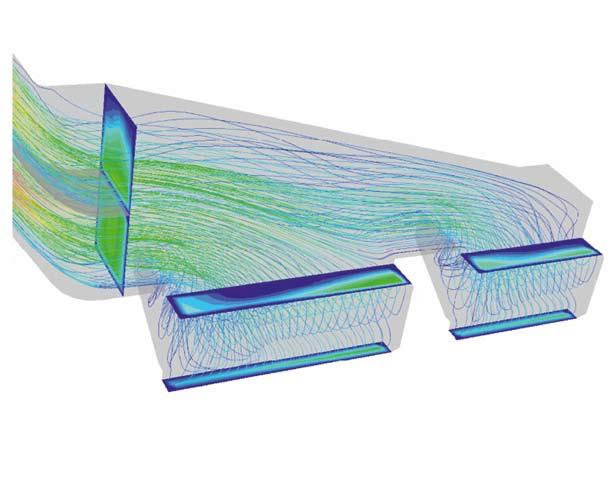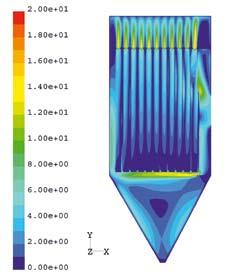
2 minute read
The right design is decisive
from impulse-Filter
by Scheuch
One of the foundations for cost optimisation is an efficient filter that exhibits the most homogenous gas and particle distribution possible and that has an efficient cleaning system. Another factor that fundamentally determines the overall cost structure is the optimum ratio between two design parameters that interact with each other, the air-to-cloth ratio and pressure loss. As a matter of principle one should strive to maximize the air-to-cloth ratio and minimize pressure loss. Relying on our IMPULS filter program and their own expertise, our specialists are able to offer you the ideal solution for every requirement. Then high degree of preassembly in the transport-ready modules and elements makes a significant contribution to the reduction of transport costs and assembly times.
Low investment costs through compact construction and a high air-to-cloth ratio based on efficient IMPULS cleaning system optimal gas and particle distributions in the filter best possible utilisation of the entire filter surface
Advertisement
Low fan energy costs through low pressure loss due to a lower plant resistance as the result of flow optimisation the selection of the right filter medium an efficient cleaning process over the entire length of the filter bag
Low costs for compressed air due to less frequent cleaning high proportion of secondary air low cleaning pressure
Long service lifetimes for filter bags guaranteed by selection of the appropriate medium bag-friendly, gentle cleaning process
High availability due to proper design and standards-compliant execution of the plant corresponding safety and monitoring devices
Optimal distribution of the gas and particle streams
Economical operation with homogenous dust discharge is only ensured by the uniform impact of gas on the filter bags and optimal utilisation of the entire filter surface. Velocity streams and the creation of particle streams should be avoided, as these can cause physical damage to the filter bags and casing after a certain period of time.
These flow simulations show that velocities in the entire crude gas area are approximately equal and that there is consequently a homogenous distribution of particles.

The optimum distribution of the crude gas in the filter depends primarily on the inflow of gas to the filter itself. In addition to such parameters as entry velocity, dust load and dust characteristics, the configuration of pipes leading to the filter significantly influences the uniform impact of gas on the filter bags.
With the aid of CFD simulation, we are able to determine, among other things, the optimal shape and arrangement of guide plates in the crude gas line in order to achieve a uniform incoming flow when space is tight.
With the help of modern CFD programs (Computational Fluid Dynamics), we are able to perform quick and reliable analyses of gas particle flows, mixing processes with heat transfer, and pressure loss computations. The insights gained during flow analyses using numerical simulation (CFD) and through experimental studies using a test model provide the basis for the filter design and directly influence ongoing product optimisation. They also confirm that Scheuch’s IMPULS filtration plants offer an optimum distribution of the gas and particle streams.



